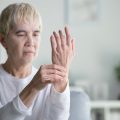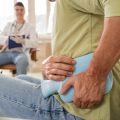1. Introduction to Tendon and Ligament Healing
Tendon and ligament injuries represent a significant concern within the landscape of musculoskeletal health in the United Kingdom. These connective tissues are essential for joint stability and movement, yet they are particularly susceptible to both acute trauma and chronic overuse injuries. According to recent NHS data, such injuries are prevalent across a broad demographic spectrum, from young athletes participating in competitive sports to older adults facing degenerative changes. The burden on the UK healthcare system is substantial, with thousands of cases requiring clinical assessment, rehabilitation, or even surgical intervention each year.
The importance of effective tendon and ligament healing extends beyond individual patient outcomes; these injuries contribute to work absenteeism, decreased quality of life, and increased demand for physiotherapy and orthopaedic services. Within the British context, specific challenges arise due to population ageing, lifestyle factors, and the high participation rates in community sport. Moreover, the NHS faces unique pressures—balancing evidence-based practice, resource allocation, and equitable access to advanced therapies. This introductory overview provides the foundation for understanding current approaches to managing tendon and ligament injuries within the UK, emphasising both their epidemiological significance and the complexities inherent in British healthcare settings.
2. Biological Principles Underpinning Healing
The scientific understanding of tendon and ligament healing forms the foundation for current clinical approaches across the UK, particularly within NHS settings. This healing process is intricate, involving a finely balanced sequence of biological events that ultimately determine patient outcomes. In this section, we examine the core cellular responses, the role of inflammation, and the stages of tissue remodelling that collectively underpin successful recovery.
Cellular Responses in Tendon and Ligament Repair
Upon injury, tendons and ligaments undergo a highly coordinated cellular response. Resident cells such as tenocytes and fibroblasts are activated almost immediately. These cells migrate to the site of damage, proliferate, and begin synthesising new extracellular matrix components, primarily collagen fibres. The early cellular response is critical for both stabilising the injured tissue and setting the stage for subsequent healing phases.
Table 1: Key Cellular Players in Healing
| Cell Type | Function | UK Clinical Relevance |
|---|---|---|
| Tenocytes | Synthesise collagen and maintain tendon structure | Main target for regenerative therapies under NHS guidelines |
| Fibroblasts | Produce extracellular matrix during repair | Centrally involved in surgical graft integration |
| Macrophages | Mediate inflammation and clear debris | Modulation targeted in advanced physiotherapy protocols |
| Endothelial Cells | Promote angiogenesis (new blood vessel formation) | Facilitate nutrient delivery for healing tissues in UK acute care units |
The Inflammatory Response: Friend or Foe?
The inflammatory phase is initiated within hours following injury and is marked by an influx of immune cells such as neutrophils and macrophages. While inflammation is essential for clearing damaged tissue and preventing infection, excessive or prolonged inflammation can impair healing—a concern reflected in NHS best practice standards. Consequently, UK clinicians often adopt protocols aimed at optimising, rather than suppressing, this crucial biological response.
Tissue Remodelling: From Scar Formation to Functional Recovery
The final phase of tendon and ligament healing involves extensive tissue remodelling. Collagen fibres realign along lines of mechanical stress, gradually restoring tensile strength and function to the injured tissue. This stage may span several months—a timeline frequently discussed with patients during NHS consultations to set realistic expectations regarding rehabilitation.
Table 2: Stages of Tissue Remodelling in NHS Practice
| Stage | Description | NHS Approach/Consideration |
|---|---|---|
| Early Remodelling (Weeks 1-6) | Initial collagen synthesis; weak scar formation | Protected mobilisation advised by UK physios to prevent re-injury |
| Maturation (Months 2-6) | Collagen fibre alignment; gradual strength gain | Progressive loading introduced according to NICE guidelines |
| Late Remodelling (6+ Months) | Tendon/ligament regains functional capacity close to pre-injury state | Return-to-sport protocols tailored by NHS multidisciplinary teams |
Summary and Clinical Implications in the UK Context
An in-depth grasp of these biological principles enables UK clinicians to deliver evidence-based care that aligns with both national guidelines and the needs of diverse patient populations. By appreciating the nuances of cellular activity, inflammation management, and tissue remodelling, practitioners within the NHS can optimise outcomes for tendon and ligament injuries using approaches grounded in robust science.
![]()
3. Current Clinical Practices in the UK
The management of tendon and ligament injuries within the NHS reflects a careful synthesis of evidence-based medicine, clinical pragmatism, and the established traditions of British orthopaedic care. Modern practice in the UK is characterised by a clear preference for conservative, non-surgical treatment as the first line of management for most tendon and ligament pathologies. This conservative approach is rooted in both clinical outcomes research and NHS standards, which prioritise patient safety, cost-effectiveness, and functional recovery.
Non-Surgical Modalities
NHS practitioners commonly employ physiotherapy-led rehabilitation programmes as the cornerstone of non-surgical intervention. These protocols are highly individualised, focusing on progressive loading, proprioceptive training, and gradual return to activity. Adjunct therapies such as bracing, taping, and extracorporeal shockwave therapy are also routinely used. The British tradition emphasises multidisciplinary collaboration; physiotherapists, orthopaedic consultants, and occupational therapists work closely to ensure holistic care tailored to each patient’s needs.
Surgical Interventions
When surgical intervention becomes necessary—typically in cases of complete rupture or failed conservative management—the NHS adopts minimally invasive techniques whenever possible. Arthroscopic procedures and advanced suture technologies are favoured for their reduced morbidity and faster post-operative rehabilitation. The use of autografts or allografts in ligament reconstruction is guided by NICE guidelines, ensuring that interventions are both evidence-based and consistent with national standards. Post-operative care is highly protocol-driven, with early mobilisation being a core principle aligned with current UK clinical guidance.
Reflection of Broader British Clinical Traditions
These practices reflect broader themes in British medicine: a measured approach that values long-term function over quick fixes, an emphasis on shared decision-making with patients, and adherence to standardised pathways that support equity of care across the country. The integration of new modalities—such as biological augmentation or regenerative therapies—is carefully managed through ongoing NHS trials and audits, ensuring that innovation proceeds alongside safety and accountability.
4. Rehabilitation Approaches and Physiotherapy
Rehabilitation following tendon and ligament injuries in the UK is grounded in evidence-based practice, guided by NHS standards and tailored to optimise patient outcomes. The process integrates structured physiotherapy protocols, phased rehabilitation programmes, and collaboration within multidisciplinary teams. This section provides an analytical overview of current rehabilitation approaches and physiotherapy strategies commonly implemented across the UK.
Principles of Rehabilitation Protocols
The principles underpinning tendon and ligament rehabilitation emphasise progressive loading, restoration of function, and minimisation of re-injury risk. NHS guidelines advocate for early mobilisation where appropriate, balanced against the need for tissue protection during initial healing phases. Standard protocols often include:
- Acute Phase: Protection, pain management, controlled range-of-motion exercises
- Subacute Phase: Gradual introduction of strengthening and proprioceptive exercises
- Remodelling Phase: Advanced functional training and sport-specific drills (if applicable)
Physiotherapy Strategies in the UK Context
UK physiotherapists adopt a range of strategies to address individual patient needs while adhering to NHS best practice recommendations. Commonly employed techniques include:
| Technique/Strategy | Description | NHS Guidance Reference |
|---|---|---|
| Manual Therapy | Soft tissue mobilisation and joint mobilisation to restore movement | NICE NG59, CSP Standards |
| Therapeutic Exercise | Progressive resistance training, flexibility, proprioception drills | NICE CG176, NHS Evidence Base |
| Electrotherapy Modalities | Ultrasound or TENS as adjuncts for pain relief and tissue repair | CSP Recommendations (with caution) |
| Patient Education & Self-management | Home exercise plans, activity modification advice | NHS Patient Empowerment Strategy |
The Role of Multidisciplinary Teams (MDTs)
The integration of multidisciplinary teams is a cornerstone of tendon and ligament rehabilitation within the NHS framework. MDTs typically comprise physiotherapists, orthopaedic consultants, occupational therapists, sports physicians, and nursing staff. Regular MDT meetings ensure coordinated care, allowing for collective decision-making regarding progression milestones, return-to-work or sport decisions, and addressing psychosocial factors influencing recovery.
NHS Standards in MDT Collaboration
- Treatment Planning: Shared electronic health records facilitate seamless communication across professionals.
- Outcome Measurement: Use of standardised tools such as the Oxford Shoulder Score or Lysholm Knee Scoring Scale to monitor progress.
- Patient-centred Care: Personalised goal-setting involving both patients and carers where relevant.
Summary Analysis
The UK’s approach to tendon and ligament rehabilitation combines structured physiotherapy with collaborative multidisciplinary input, all aligned with NHS quality standards. This ensures not only physical recovery but also addresses broader health and wellbeing considerations fundamental to optimal long-term outcomes.
5. NHS Standards and Evidence-based Care
Clinical Guidelines: Setting the Benchmark for Care
Within the National Health Service (NHS), clinical guidelines are central to ensuring a unified and effective approach to tendon and ligament healing across the United Kingdom. Developed by authoritative bodies such as NICE (National Institute for Health and Care Excellence) and SIGN (Scottish Intercollegiate Guidelines Network), these evidence-based protocols outline recommended assessment, diagnostic imaging, surgical intervention, and rehabilitation strategies. The adoption of such guidelines ensures that regardless of location—be it a London teaching hospital or a rural GP surgery—patients receive care grounded in current best practice and the latest scientific evidence.
Quality Standards: Ensuring Consistency and Safety
NHS quality standards serve as practical benchmarks to drive improvements in patient outcomes. For tendon and ligament injuries, these standards may encompass timeframes for initial specialist assessment, access to advanced imaging modalities like MRI or ultrasound, multidisciplinary team involvement, and ongoing patient monitoring. Adherence is systematically audited through mechanisms such as CQC (Care Quality Commission) inspections, fostering transparency and accountability throughout NHS Trusts.
Governance Frameworks: Maintaining High Standards
Robust governance frameworks underpin all clinical services within the NHS. These frameworks demand regular review of clinical outcomes, incident reporting, and structured pathways for learning from complications or adverse events. In tendon and ligament care, governance structures encourage peer review meetings, morbidity and mortality conferences, and continuous professional development for staff involved in musculoskeletal medicine.
Multidisciplinary Collaboration Under NHS Protocols
A distinctive feature of the UK approach is the emphasis on multidisciplinary teams (MDTs). Orthopaedic surgeons, physiotherapists, radiologists, occupational therapists, and nurse specialists collaborate closely within established NHS protocols to tailor rehabilitation plans for each individual. This MDT model not only streamlines communication but also aligns treatment with national standards for functional recovery and long-term prevention of re-injury.
Patient-Centred Outcomes: The Core of NHS Practice
The NHS places strong emphasis on measuring outcomes that matter most to patients—pain reduction, restoration of function, return to daily activities, and overall quality of life. Patient-reported outcome measures (PROMs) are routinely collected to inform service improvement and guide future guideline updates. This commitment ensures that tendon and ligament healing practices evolve in response to both emerging clinical evidence and patient experience across the UK.
6. Future Directions and Innovations
Emerging Therapies: From Concept to Clinical Practice
The field of tendon and ligament healing in the UK is rapidly evolving, with a strong focus on integrating emerging therapies into clinical practice. Regenerative medicine, particularly stem cell therapy and platelet-rich plasma (PRP) injections, has generated considerable interest among researchers and NHS clinicians alike. These biological treatments aim to enhance the body’s intrinsic repair mechanisms, potentially reducing recovery times and improving functional outcomes for patients. While early evidence appears promising, robust clinical trials tailored to the UK population are essential before these interventions become routine within NHS protocols.
Research Priorities: Evidence-Based Advancement
Current research priorities within the UK context emphasise large-scale, multicentre studies that align with NHS standards of safety, efficacy, and cost-effectiveness. Key areas include optimising rehabilitation protocols, understanding the molecular basis of tendon and ligament repair, and identifying patient-specific factors that influence healing outcomes. Collaborative efforts between academic institutions, NHS trusts, and industry partners are fostering a culture of innovation while maintaining rigorous regulatory oversight. The commitment to evidence-based practice ensures that new therapies are adopted only when their benefits are clearly demonstrated within real-world UK healthcare settings.
Technology-Driven Solutions: Digital Health and Personalised Care
Technological advancements are increasingly shaping tendon and ligament care across the UK. Digital health tools—such as wearable sensors, tele-rehabilitation platforms, and artificial intelligence-driven diagnostics—are being piloted within NHS services to support personalised treatment plans and remote monitoring of recovery progress. These innovations not only empower patients in their own rehabilitation journey but also enable clinicians to deliver more efficient and tailored care. The integration of big data analytics further supports predictive modelling for injury risk assessment and outcome forecasting, aligning with broader NHS objectives to improve population health management.
Challenges and Opportunities for Implementation
Despite these advances, several challenges must be addressed for successful implementation across the NHS. Issues such as equitable access to novel therapies, standardisation of digital platforms, and ongoing training for healthcare professionals require careful consideration. Ensuring that technological solutions complement rather than complicate existing workflows is crucial for sustainable adoption. Moreover, continuous dialogue with patients and stakeholders will help align innovations with public expectations and ethical standards prevalent in British society.
The Road Ahead: Shaping the Future of Tendon and Ligament Healing in the UK
Looking forward, the convergence of cutting-edge science, technology, and a patient-centred ethos positions the UK as a leader in tendon and ligament healing innovation. By prioritising collaborative research, evidence-based practice, and digital transformation within the framework of NHS standards, future approaches promise not only improved clinical outcomes but also enhanced patient experiences. As emerging therapies transition from experimental stages to mainstream use, ongoing evaluation and adaptation will be key to ensuring they meet the unique needs of both practitioners and patients across the United Kingdom.


